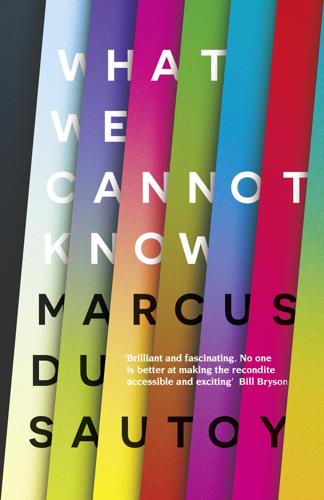
What We Cannot Know: Explorations at the Edge of Knowledge
by
Marcus Du Sautoy
Published 18 May 2016
He’d estimated the angle to be 87 degrees, while the true value is 89.853, almost a right angle. Small differences in angles of this size result in quite large differences in the relative size of the lengths of the sides of the triangle. It would need the invention of the telescope and some more clever mathematics to truly determine the size of the solar system. The right-angled triangle made by the Earth, Moon and Sun when the Moon is half full. Even without the invention of the telescope, astronomers could see that the Moon and Sun weren’t the only bodies processing through the sky. Ancient cultures picked up several tiny pricks of light in the night sky that behaved very differently from the plethora of other stars.
…
Although we don’t have a ship in which we can sail to the edges of the universe, scientists in the seventeenth century did come up with a cunning way to explore space: the telescope. HOW FAR CAN YOU SEE? It was Galileo’s generation that discovered you could enhance how far you can see by placing carved glass lenses in a tube. Indeed, for years Galileo himself seemed to get the credit for the invention of the telescope, but that accolade should go to the Dutch spectacle-maker Hans Lippershey, who filed a patent for an instrument ‘for seeing things far away as if they were nearby’. The Dutch instrument was able to magnify things by a factor of 3. Galileo heard about the instrument on a trip to Venice.
…
THE STARS IN OUR NEIGHBOURHOOD Looking at the celestial sphere on my desk, I find it laughable that the ancient Greeks thought the stars were painted on a huge celestial ball enclosing the universe with the void beyond. But they didn’t have much to go on. Given the distance of the stars from the Earth, to the naked eye they all look to be a long way away. It was impossible for the ancient astronomers to detect any depth. But the invention of the telescope brought those stars a little closer, close enough that modern astronomers could see that they were not all the same distance from the Earth. If one star is nearer to us than another, then there is a way to tell that it’s closer. Although we are stuck on the surface of the Earth, at least the Earth is moving relative to the stars, which means we get different viewpoints on the cosmos.
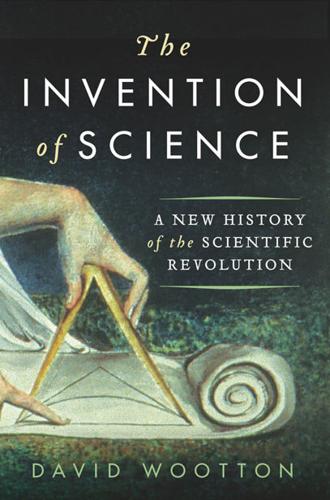
The Invention of Science: A New History of the Scientific Revolution
by
David Wootton
Published 7 Dec 2015
As we will see, the Copernican revolution was delayed until the seventeenth century: very few sixteenth-century astronomers accepted Copernicus’s claim that the Earth revolves around the sun instead of standing still at the centre of the cosmos. The real revolution in astronomy came with Tycho Brahe’s nova, with the abandonment of belief in the crystalline spheres, and with the invention of the telescope. The key date is not 1543 but 1611. The title page of Johannes Stradanus’s New Discoveries (Nova reperta, c.1591) summarizes the knowledge that marks off the modern world from the ancient. Pride of place is given to the discovery of America and the invention of the compass, with, between them, the printing press.
…
But Gilbert understood that, seen from the moon, the Earth would shine like a vast moon; and that, seen from further away, it would shine like a star (here, he directly argued against Benedetti). The moon, he thought, had continents and oceans, just like the Earth. Like Bruno, he thought the oceans would be brighter than the land. He saw no reason why the other planets should not be just like the Earth.94 Gilbert drew, before the invention of the telescope, the first map of the moon, and as a result discovered its libration, the fact that it appears to turn slightly, up and down and from side to side, as it faces the Earth. This confirmed his conviction that the planets float freely in space. Moreover, Gilbert was the first to break completely with the notion that movement in the heavens must be circular: his planets trace complicated paths through the void; such a path could explain why the moon appears to wobble in the sky.
…
Man ceased to be the measure of all else only with the adoption of the metric system in France in 1799.46 The basic unit of measurement (from which volumes and weights were derived) became the metre, originally defined as one ten millionth of the distance from the equator to the North Pole. The metric system merely completed a process that had begun with the invention of the telescope, which definitively destroyed the idea that the universe was made on the same scale as man. § 5 According to orthodox Christian thinking (at least until Pascal), the universe had been made to provide a home for humankind. The sun was there to provide light and heat by day, the moon and stars light by night.
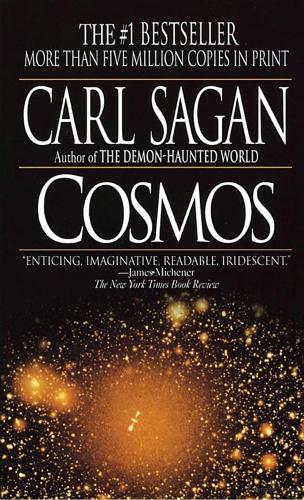
Cosmos
by
Carl Sagan
Published 1 Jan 1980
But Kepler remained preoccupied with his work. He envisioned Tycho’s domain as a refuge from the evils of the time, as the place where his Cosmic Mystery would be confirmed. He aspired to become a colleague of the great Tycho Brahe, who for thirty-five years had devoted himself, before the invention of the telescope, to the measurement of a clockwork universe, ordered and precise. Kepler’s expectations were to be unfulfilled. Tycho himself was a flamboyant figure, festooned with a golden nose, the original having been lost in a student duel fought over who was the superior mathematician. Around him was a raucous entourage of assistants, sycophants, distant relatives and assorted hangers-on.
…
In the Somnium he tried to make the rotation of the Earth plausible, dramatic, comprehensible: “As long as the multitude does not err,… I want to be on the side of the many. Therefore, I take great pains to explain to as many people as possible.” (On another occasion he wrote in a letter, “Do not sentence me completely to the treadmill of mathematical calculations—leave me time for philosophical speculations, my sole delight.”*) With the invention of the telescope, what Kepler called “lunar geography” was becoming possible. In the Somnium, he described the Moon as filled with mountains and valleys and as “porous, as though dug through with hollows and continuous caves,” a reference to the lunar craters Galileo had recently discovered with the first astronomical telescope.
…
The idea that geometrical order reveals an underlying intelligence was central to Kepler’s life. His argument on the lunar craters is a clear foreshadowing of the Martian canal controversy (Chapter 5). It is striking that the observational search for extraterrestrial life began in the same generation as the invention of the telescope, and with the greatest theoretician of the age. Parts of the Somnium were clearly autobiographical. The hero, for example, visits Tycho Brahe. He has parents who sell drugs. His mother consorts with spirits and daemons, one of whom eventually provides the means to travel to the moon. The Somnium makes clear to us, although it did not to all of Kepler’s contemporaries, that “in a dream one must be allowed the liberty of imagining occasionally that which never existed in the world of sense perception.”
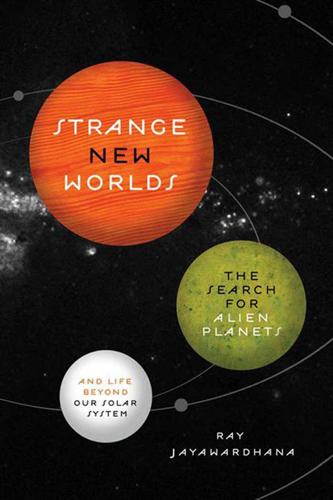
Strange New Worlds: The Search for Alien Planets and Life Beyond Our Solar System
by
Ray Jayawardhana
Published 3 Feb 2011
The tide started to turn with the publication of Nicolas Copernicus’s infuential volume On the Revolutions of Celestial Bodies just before his death in 1543. He posited that the Sun occupied the center of the universe, thus displacing the Earth from its unique niche. But the true revolution occurred with the invention of the telescope at the beginning of the next century. Galileo’s 1610 discovery of four moons circling Jupiter proved the existence of heavenly bodies that did not orbit the Earth. He also showed that Venus exhibited a full set of phases, just like the Moon, as predicted by Copernicus’s Sun-centered model.
…
These celestial alignments follow a precise cycle, with time intervals of 8.0, 121.5, 8.0, and 105.5 years in the case of Venus; Mercury transits are more frequent, with about a dozen or so per century. As Venus passes in front of the Sun, taking several hours to do so, it appears as a black dot about one-thirtieth the solar diameter. It’s big enough to be seen with the (properly protected) naked eye, but there are no records of a transit being observed before the invention of the telescope early in the seventeenth century. That’s not too surprising given the rarity of the event. In 1629 Johannes Kepler, as he investigated the laws of planetary motion, realized that transits of both Venus and Mercury would occur two years later. Unfortunately, he didn’t live to see either, and the Venus transit of 1631 was not visible from Europe in any case.
…
Yet Venus, with a broiling surface temperature of 400 degrees Celsius, a crushing surface pressure ninety times that of the Earth’s at sea level, and a carbon dioxide atmosphere that confrms our worst fears of the greenhouse effect, cannot sustain life as we know it. That’s why fnding, or even imaging, Earth-size planets elsewhere is one thing, but detecting life is quite another. Chapter 9 Signs of Life How Will We Find E.T.? Once the invention of the telescope showed that the Earth is but one world among many, it opened the serious prospect of life on other planets. The reconnaissance within our solar system has revealed some tantalizing hints but no defnitive evidence so far. Now that we are on the verge of fnding extrasolar worlds with conditions hospitable for life, the question has gained a new urgency.
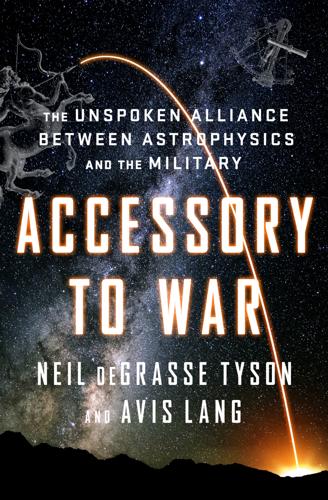
Accessory to War: The Unspoken Alliance Between Astrophysics and the Military
by
Neil Degrasse Tyson
and
Avis Lang
Published 10 Sep 2018
The solution—concave spectacle lenses—was for sale in Florence by 1451 (Van Helden, “Invention of the Telescope,” 10–11). 3.See Watson, Stargazer, 71–73, re observations prior to Galileo’s. As with the rest of his scientific discoveries, Harriot did not publish his results, note J. J. O’Connor and E. F. Robertson in “Thomas Harriot,” MacTutor History of Mathematics Archive, University of St. Andrews, Scotland, www-gap.dcs.st-and.ac.uk/history/Biographies/Harriot.html (accessed Apr. 13, 2017). 4.Watson, Stargazer, 55–62; Van Helden, “Invention of the Telescope,” 25–26, 36–42. 5.Engel Sluiter, “The Telescope Before Galileo,” J.
…
Almost no one challenged the legitimacy of a hierarchically ordered society, the precondition of the patronage that supported Galileo in an economically unproductive occupation.” Richard S. Westfall, “Science and Patronage: Galileo and the Telescope,” Isis 76:1 (Mar. 1985), 14. 8.All quotes from Van Helden, “Invention of the Telescope,” 15, 28–30. 9.See, e.g., Van Helden, “Invention of the Telescope,” 11, 26; Engel Sluiter, “The First Known Telescopes Carried to America, Asia and the Arctic, 1614–39,” J. History of Astronomy 28:91 (May 1997), 141; Engel Sluiter, “The Telescope Before Galileo,” J. History of Astronomy 28:92 (Aug. 1997), 224–29. 10.Las Lanzas, also known as Surrender at Breda (1634–35), 307 x 367 cm., Museo Nacional del Prado, Madrid. 11.Robert K.
…
Kaplan, “Why the Greenwich Meridian Moved,” J. Geodesy 89:12 (Dec. 2015), 1263–72. Universal Time, or UT1, was formerly known as Greenwich Mean Time. 4. ARMING THE EYE 1.Fred Watson, Stargazer: The Life and Times of the Telescope (Cambridge, MA: Da Capo Press, 2004), 49–50, 296–97; Albert Van Helden, “The Invention of the Telescope,” Transac. Amer. Philosophical Society 67:4 (June 1977), 9, n. 4. The pope referred to was Gerbert d’Aurillac, who reigned as Pope Sylvester II from 999 to 1003. 2.From Galileo’s Sidereus Nuncius: “Afterward I made another more perfect one for myself that showed objects more than sixty times larger.
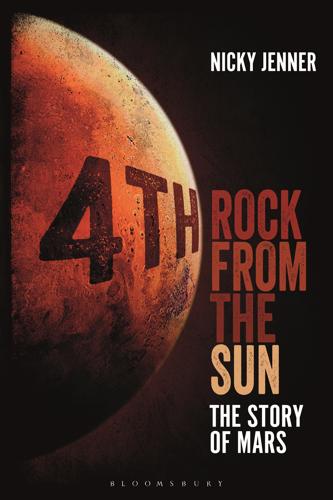
4th Rock From the Sun: The Story of Mars
by
Nicky Jenner
Published 5 Apr 2017
Mars has been a key player in astronomy for millennia, due in large part to its proximity to Earth. While the more distant outer planets – Uranus, Neptune, the now-demoted Pluto – were only discovered following the invention of the telescope in the 1600s, the inner and nearby outer planets have always been visible with the naked eye, and so have been included as part of our Solar System models since the year dot. The invention of the telescope enabled us to characterise our nearest neighbours better than ever before. Many astronomers turned their eyes Mars-ward; Galileo Galilei, widely regarded as one of the fathers of the telescope, is thought to have observed the planet from 1608 to 1610, completing some of the very first telescopic views of Mars.
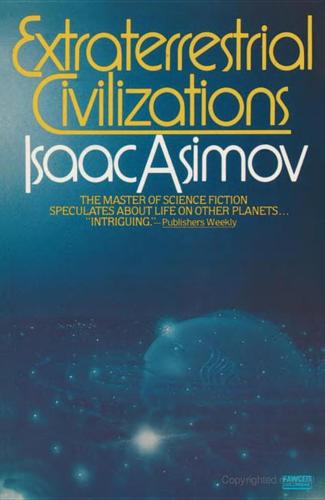
Extraterrestrial Civilizations
by
Isaac Asimov
Published 2 Jan 1979
This came in 1532 in Orlando Furioso, an epic poem written by the Italian poet Ludovico Ariosto (1474–1533). In it, one of the characters travels to the Moon in the divine chariot that carried the prophet Elijah in a whirlwind to Heaven. He finds the Moon well populated by civilized people. The notion of a plurality of worlds received still another push forward with the invention of the telescope. In 1609, the Italian scientist Galileo Galilei (1564–1642) constructed a telescope and pointed it at the Moon. For the first time in history, the Moon was seen magnified, and more clearly detailed than was possible with the unaided eye. Galileo saw mountain ranges on the Moon, together with what looked like volcanic craters.
…
The Milky Way is a faint, luminous fog that seems to form a belt around the sky. In some ancient myths, it was pictured as a bridge connecting heaven and Earth. To the Greeks it was sometimes seen as a spray of milk from the divine breast of the goddess Hera. A more materialistic way of looking at the Milky Way, prior to the invention of the telescope, was to suppose it was a belt of unformed star matter. When Galileo looked at the Milky Way, however, he saw it was made up of myriads of very faint stars. For the first time, a true notion of how numerous the stars actually were broke in on the consciousness of human beings. If God had granted Abraham telescopic vision, the assurance of innumerable descendants would have been formidable indeed.

Pale Blue Dot: A Vision of the Human Future in Space
by
Carl Sagan
Published 8 Sep 1997
The low temperatures provide an advantage, though, because once molecules are synthesized on Titan, they tend to stick around: The higher the temperature, the faster molecules fall to pieces. On Titan the molecules that have been raining down like manna from heaven for the last 4 billion years might still be there, largely unaltered, deep-frozen, awaiting the chemists from Earth. THE INVENTION OF THE TELESCOPE In the seventeenth century led to the discovery of many new worlds. In 1610 Galileo first spied the four large satellites of Jupiter. It looked like a miniature solar system, the little moons racing around Jupiter as the planets were thought by Copernicus to orbit the Sun. It was another blow to the geocentrists.
…
Still others suggested that the dense cloud of fine particles accompanying the fragments of Comet Shoemaker-Levy 9 into Jupiter would disrupt the magnetosphere of Jupiter or form a new ring. A comet this size should impact Jupiter, it is calculated, only once every thousand years. It's the astronomical event not of one lifetime, but of a dozen. Nothing on this scale has occurred since the invention of the telescope. So in mid July 1994, in a beautifully coordinated international scientific effort, telescopes all over the Earth and in space turned towards Jupiter. Astronomers had over a year to prepare. The trajectories of the fragments in their orbits around Jupiter were estimated. It was discovered that they would all hit Jupiter.

The Grand Design
by
Stephen Hawking
and
Leonard Mlodinow
Published 14 Jun 2010
Ironically, Copernicus’s own worldview was anthropomorphic, even to the extent that he comforts us by pointing out that, despite his heliocentric model, the earth is almost at the universe’s center: “Although [the earth] is not at the center of the world, nevertheless the distance [to that center] is as nothing in particular when compared to that of the fixed stars.” With the invention of the telescope, observations in the seventeenth century, such as the fact that ours is not the only planet orbited by a moon, lent weight to the principle that we hold no privileged position in the universe. In the ensuing centuries the more we discovered about the universe, the more it seemed ours was probably just a garden-variety planet.
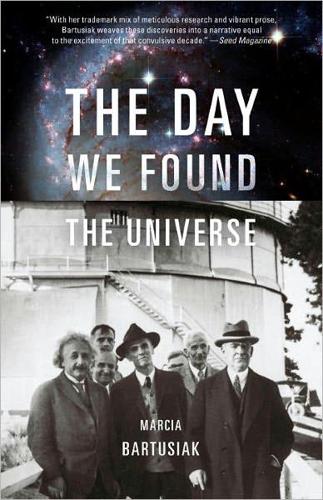
Day We Found the Universe
by
Marcia Bartusiak
Published 6 Apr 2009
The most famous is in the northern constellation Andromeda, the mythical princess situated in the sky near her parents, Cassiopeia and Cepheus, and her husband, Perseus. At her waist is an oval patch of light, best seen on the darkest of nights. As early as the tenth century, astronomer Al-Sufi of Persia noted it as a “little cloud” in his catalog of the heavens. With the invention of the telescope more nebulae were sighted, and by the early 1700s Edmond Halley (of comet fame) counted six in all. To some observers, these pale entities were breaks in the celestial sphere, through which the light of the Empyrean—the highest heaven—came shining down. Others suggested that they were the hazy atmospheres surrounding distant stars.
…
Astronomers eager to solve the spiral nebulae dilemma had Mars, strangely enough, to thank for a further step toward an answer—at least in a roundabout way. The red planet, with its vivid ruby luster, has fascinated stargazers for millennia, but interest grew even more intense after the invention of the telescope. With the extra magnification astronomers could at last discern markings on the surface of Mars. Bright patches around its poles, similar in appearance to our own planet's arctic and antarctic regions, were seen to wax and wane with the Martian seasons. So Earthlike was this behavior that by 1784 William Herschel was reporting that Mars “is not without a considerable atmosphere … so that its inhabitants probably enjoy a situation in many respects similar to ours.”
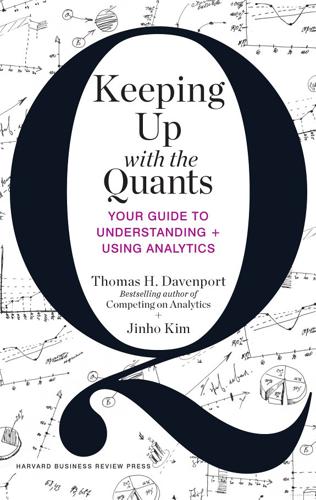
Keeping Up With the Quants: Your Guide to Understanding and Using Analytics
by
Thomas H. Davenport
and
Jinho Kim
Published 10 Jun 2013
With his luck and superior mathematical talent, Kepler solved the mystery of the planets. Kepler’s data was primarly gathered by Tycho Brahe (1546–1601), a Danish nobleman and brilliant astronomer who made the most accurate astronomical observations of his time by devising the most precise instruments available prior to the invention of the telescope. With generous royal support from the king of Denmark, Brahe built a research center called Uraniborg (castle of the heavens), which became the finest observatory in Europe. He designed and built new instruments, calibrated them, and instituted scrupulous nightly observations for over twenty years.
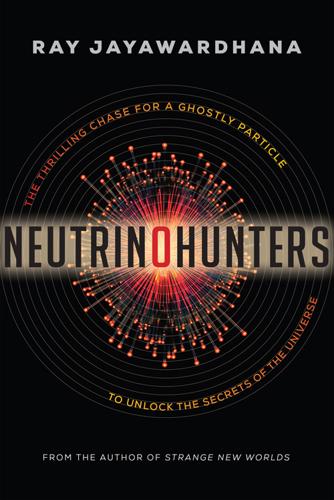
Neutrino Hunters: The Thrilling Chase for a Ghostly Particle to Unlock the Secrets of the Universe
by
Ray Jayawardhana
Published 10 Dec 2013
By midmorning of February 24, scientists around the world learned about the discovery, tipped off by phone calls from giddy colleagues and a telegram from the International Astronomical Union. Their delight had to do with the fact that Supernova 1987A (as it came to be known) was the first one observed in our galactic neighborhood since the invention of the telescope nearly four centuries earlier. It was the nearest and the brightest supernova seen in 383 years—since Johannes Kepler observed a supernova in our own galaxy with his naked eye in 1604—and as such, it offered astronomers an unprecedented opportunity to witness a massive star’s last hurrah.
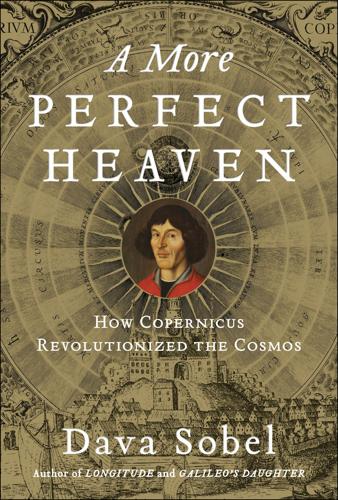
More Perfect Heaven: How Copernicus Revolutionised the Cosmos
by
Dava Sobel
Published 1 Sep 2011
The philosophical conflict and change in perception that his ideas engendered are sometimes referred to as the Copernican Revolution. HOROSCOPE FOR NICOLAUS COPERNICUS Astronomers and astrologers in Copernicus’s time shared the same pool of information about the positions of the heavenly bodies against the backdrop of the stars. Until the invention of the telescope in the seventeenth century, position finding and position predicting constituted the entirety of planetary science—and the basis for casting horoscopes. He was christened for his father—Mikolaj in Polish, Niklas in German, his native tongue. Later, as a scholar, he Latinized his name, but he grew up Niklas Koppernigk, the second son and youngest child of a merchant family from the copper-mining regions of Silesia.

How We Got to Now: Six Innovations That Made the Modern World
by
Steven Johnson
Published 28 Sep 2014
Dot-Dash to Dot.Com: How Modern Telecommunications Evolved from the Telegraph to the Internet. Springer, 2011. White, M. “The Economics of Time Zones,” March 2005. http://www.learningace.com/doc/1852927/fbfb4e95bef9efa4666d23729d3aa5b6/timezones. Willach, Rolf. The Long Route to the Invention of the Telescope. American Philosophical Society, 2008. Wilson, Bee. Swindled: The Dark History of Food Fraud, from Poisoned Candy to Counterfeit Coffee. Princeton University Press, 2008. Wiltse, Jeff. Contested Waters: A Social History of Swimming Pools in America. University of North Carolina Press, 2010.
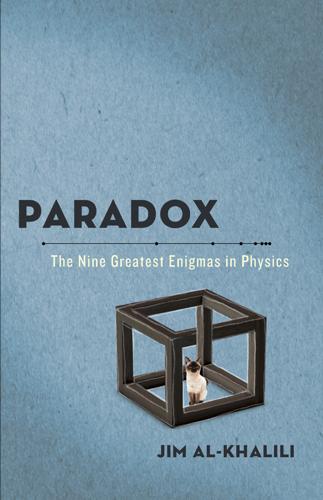
Paradox: The Nine Greatest Enigmas in Physics
by
Jim Al-Khalili
Published 22 Oct 2012
We know, with the benefit of centuries of ever more comprehensive and accurate astronomical data, leading to our current understanding in modern cosmology, that the Universe has no center at all, and may indeed extend out in all directions forever. But of course poor Copernicus, working before the invention of the telescope, could not have known any of this. It would take a relatively unknown astronomer in the sleepy English market town of Wallingford near Oxford to make the next big leap forward. His name was Thomas Digges and he was born in 1546, a few years after Copernicus died. His father, Leonard Digges, was also a scientist—credited with the invention of the theodolite, an instrument used (these days mainly by surveyors) to measure vertical and horizontal angles very precisely.

The Eureka Factor
by
John Kounios
Published 14 Apr 2015
But there is a more complete approach—a scientific approach. Science finishes the job by putting opinions and observations to the test wherever possible. Individual fields of science have had periods of extraordinary development, often spurred by new technologies. Astronomy was energized by the invention of the telescope, as biology was by the microscope. The last quarter century has seen the emergence of a new field—cognitive neuroscience—fueled by techniques for measuring the activity of a brain while it works. Techniques such as functional magnetic resonance imaging (fMRI) and high-density electroencephalography (EEG) have enabled us to explore the brain in ways that elucidate how we perceive, remember, think, feel—and have insights.
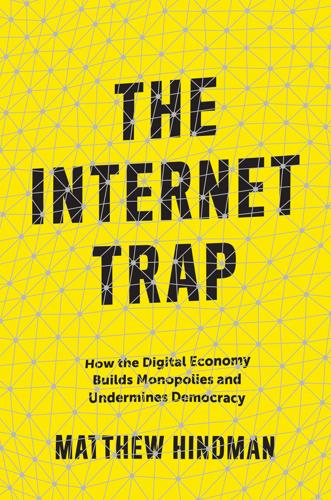
The Internet Trap: How the Digital Economy Builds Monopolies and Undermines Democracy
by
Matthew Hindman
Published 24 Sep 2018
Journalists portray themselves as indispensable public servants: as Bill Kovach and Tom Rosenstiel aptly put it, “The primary purpose of journalism is to provide citizens with the information they need to be free and self-governing.”57 But audience numbers are so shockingly low that newspapers are clearly failing in their civic role. The silver lining is that journalists have a new toolkit with which to diagnose and mend the problem. Big scientific leaps have often followed improvements in measurement, as when Newton’s laws followed the invention of the telescope. Journalism today is at such a juncture. Journalists no longer have to rely on the so-called “imagined audience” or faulty conventional wisdom. For the first time, individual journalists can directly measure the readership their stories receive. With practice, the hope is that Making News Stickier • 161 journalists can distill broader lessons about how to attract readers to the stories that really matter.
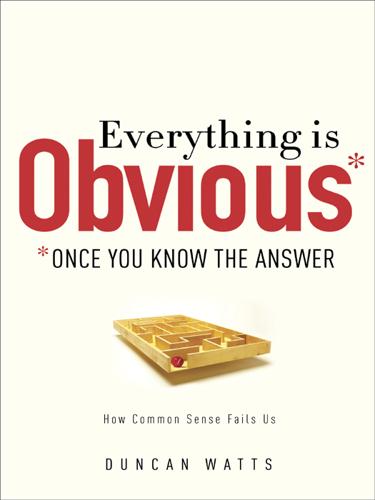
Everything Is Obvious: *Once You Know the Answer
by
Duncan J. Watts
Published 28 Mar 2011
Most recently, the genomics revolution that began more than fifty years ago with the discovery of DNA has long promised more in the way of medical treatments than it has been able to deliver; yet that hasn’t stopped us from devoting enormous resources to the pursuit of science.26 Why should the science required to understand social problems such as urban poverty or economic development or public education deserve less attention? It should not. Nor can we claim anymore that the necessary instruments don’t exist. Rather, just as the invention of the telescope revolutionized the study of the heavens, so too by rendering the unmeasurable measurable, the technological revolution in mobile, Web, and Internet communications has the potential to revolutionize our understanding of ourselves and how we interact. Merton was right: Social science has still not found its Kepler.

The Knowledge Machine: How Irrationality Created Modern Science
by
Michael Strevens
Published 12 Oct 2020
That the secrets of the universe lie in minute structures, in nearly indiscernible details, in patterns that only the most sensitive, fragile, and expensive instruments can detect, is an insight so important that it deserves a name. I call it the Tychonic principle, after the sixteenth-century Danish astronomer Tycho Brahe, who, working just before the invention of the telescope, was the last and greatest “naked-eye” astronomer, using sextants and quadrants to pinpoint the positions of stars and the movements of planets to within 0.02 degrees. To achieve this level of accuracy, Tycho built an observatory called Stjerneborg (“castle of the stars”) entirely at basement level, seeking as Michelson and Morley later would to shelter from the inaccuracy inflicted by the bustle and noise of the world outside (Figure 5.2).
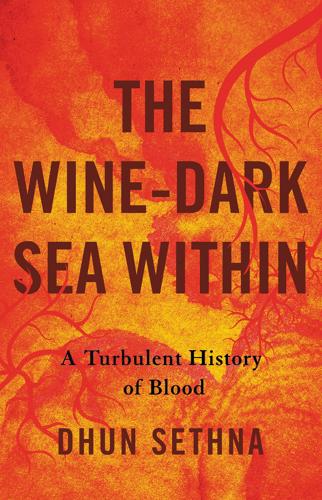
The Wine-Dark Sea Within: A Turbulent History of Blood
by
Dhun Sethna
Published 6 Jun 2022
There, Galileo devised a machine to raise water, designed the first thermometer, and constructed one of the first “spyglasses” to view the heavens; his friend, the Greek mathematician Giovanni Demisiani, proposed the name “telescope” for the spyglass. The “microscope” was a by-product of his invention of the telescope. Galileo took in boarders at his home on the Via Vignali, a narrow, winding street near an open square, and gave private tuitions to students to augment his meager academic salary. Harvey often slipped into the crowded amphitheater when Galileo lectured, and he learned to restrict his research to problems that could be solved by experiment and measurement.

The Glass Universe: How the Ladies of the Harvard Observatory Took the Measure of the Stars
by
Dava Sobel
Published 6 Dec 2016
Now, thanks to the abundance of plates and Miss Leavitt’s completion of the North Polar Sequence, Miss Vann had the necessary tools to assess the novae’s changing magnitudes over time and create a light curve for each one. On June 8, 1918, shortly before she left the observatory to take up war work, a new nova erupted in the constellation Aquila, outshining all but the very brightest stars for several weeks. At magnitude −0.5, Nova Aquilae 1918 proved the brightest such sight since the invention of the telescope, but its photographic study fell to the second Pickering Fellow, Dorothy W. Block, a 1915 graduate of Hunter College in New York City. Unlike the astronomical fellowship of the Nantucket Maria Mitchell Association, now permanently assigned to Margaret Harwood, the Pickering Fellowship entailed no Nantucket residency rule.

Darwin Among the Machines
by
George Dyson
Published 28 Mar 2012
6 Telecommunications systems have appeared, disappeared, and reappeared across the centuries: fire beacons, heliographs, and primitive forms of semaphore based on hanging or waving anything from flags to lanterns in the air. When the Spanish armada entered the English Channel in July 1588, a network of fire beacons raised the alarm, cradling the newborn Thomas Hobbes with fear. The invention of the telescope in the early seventeenth century extended the distance between relay stations and allowed more complex symbols to be distinguished. The feasibility of a “method of discoursing at a Distance, not by Sound, but by Sight” was addressed by Robert Hooke in a lecture, “Shewing a Way how to communicate one’s Mind at great Distances,” delivered to the Royal Society on 21 May 1684.

Space Chronicles: Facing the Ultimate Frontier
by
Neil Degrasse Tyson
and
Avis Lang
Published 27 Feb 2012
In my professional community of astrophysicists, about 90 percent of us, plus or minus, are liberal, antiwar Democrats. Yet practically all of our detection hardware flows out of historical relationships with military hardware. And that connection goes back centuries. In the early 1600s Galileo heard about the invention of the telescope in the Netherlands—which they used for looking in people’s windows—and he built one himself. Almost no one had thought to look up with the telescope, but Galileo did, and there he found the rings of Saturn, the phases of Venus, sunspots. Then he realized, Hey, this would be good for our defense system.
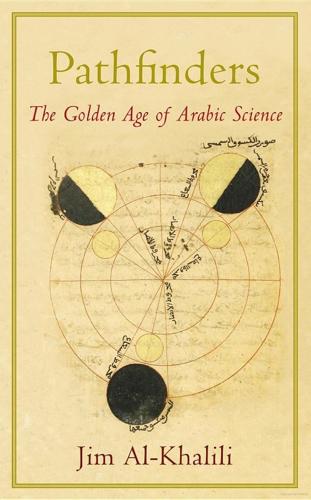
Pathfinders: The Golden Age of Arabic Science
by
Jim Al-Khalili
Published 28 Sep 2010
To Copernicus, the outer sphere of the fixed and distant stars was also centred on the sun. But we have learnt that our sun sits on an outer arm of an average spiral galaxy in a nondescript part of the universe, and certainly not at the universe’s centre. How could poor Copernicus know this before the invention of the telescope? Indeed, modern cosmology based on Einstein’s theory and centuries of ever more comprehensive and accurate astronomical data have convinced us that the universe has no centre at all, much as the surface of the earth has no centre. What Copernicus described correctly (apart from the elliptical orbits that had to await the work of Kepler) was only our sun-centred solar system.
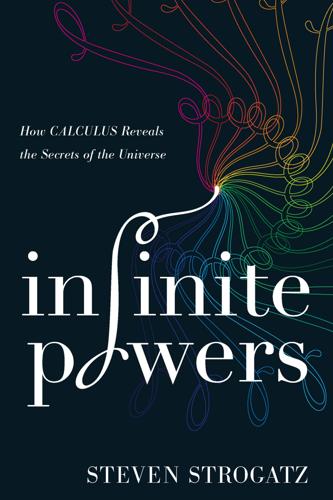
Infinite Powers: How Calculus Reveals the Secrets of the Universe
by
Steven Strogatz
Published 31 Mar 2019
Nevertheless, he didn’t give up. He continued to ponder the planets and soon got a break when Tycho Brahe asked him to be his assistant. Tycho (as historians always call him) was the world’s best observational astronomer. His data were ten times more accurate than any obtained previously. In the days before the invention of the telescope, he’d devised special instruments that allowed him, with the naked eye, to resolve the angular positions of the planets to within two arcminutes. That’s one-thirtieth of a degree. To get a sense of what a tiny angle this is, imagine looking up at the full moon on a clear night while holding your little finger all the way out in front of your face.
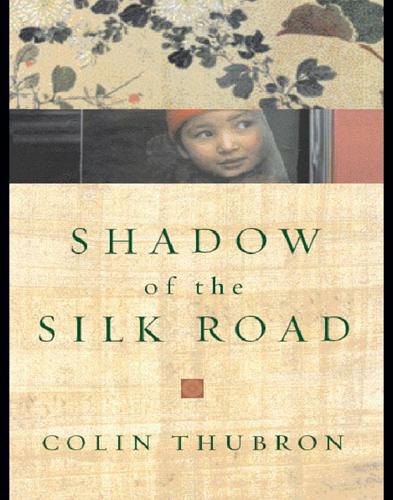
Shadow of the Silk Road
by
Colin Thubron
Published 1 Jan 2006
In his court of architects and painters, calligraphers and poets, Mongol vigour and Persian delicacy struck momentary fire. Another son, the talented prince Baisanghur, assembled a forty-strong workshop of illuminators and book-binders–and a unique library–before drinking himself to death at the age of thirty-seven. In Samarkand, meanwhile, two centuries before the invention of the telescope, Ulug Beg was charting the course coordinates of 1,018 stars, and recalculating the stellar year to within seconds of that computed by electronics. At the heart of this renaissance was Shah Rukh’s prodigious queen, Gawhar Shad. These were her children. Her foundations–mosques, palaces, colleges, baths, libraries–spread in lavish patronage all over eastern Persia and Afghanistan.

Adam Smith: Father of Economics
by
Jesse Norman
Published 30 Jun 2018
In part this was the result of scientific advance: the dethroning of the Ptolemaic view of the universe described by Smith, in favour of the heliocentric view of Copernicus and his followers; the astonishing discoveries of Newton; major mathematical developments by Descartes in geometry, and Leibniz and Newton with the calculus; the invention of the telescope and microscope, and the new natural philosophy of Galileo, Boyle and Hooke. But these achievements in turn betokened a much wider intellectual, social and cultural realignment, away from religion, deference to institutions and received wisdom and towards individual reason, scepticism and the exchange of ideas.
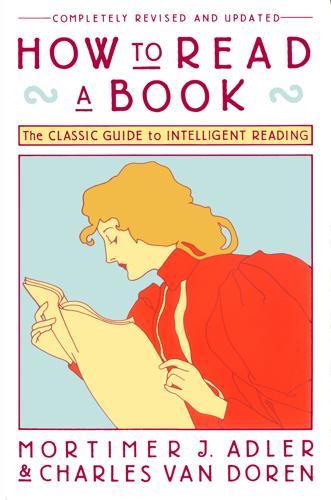
How to Read a Book
by
Mortimer J. Adler
and
Charles van Doren
Published 14 Jun 1972
Because celestial bodies were subject to one kind of change only—local motion—whereas all terrestrial bodies change in other respects as well, the ancients concluded that they had to be composed of a different kind of matter. They did not surmise, nor could they probably have surmised, that with the invention of the telescope, the heavenly bodies would give us knowledge of their mutability beyond anything we can know through common experience. Hence they took as a question that they thought it proper for philosophers to answer one that should have been reserved for later scientific investigation. Such investigation began with Galileo’s use of the telescope and his discovery of the moons of Jupiter; this led to the revolutionary assertion by Kepler that the matter of the heavenly bodies is exactly the same as the matter of bodies on earth; and this in turn laid the groundwork for Newton’s formulation of a celestial mechanics in which the same laws of motion apply without qualification to all bodies wherever they are in the physical universe.
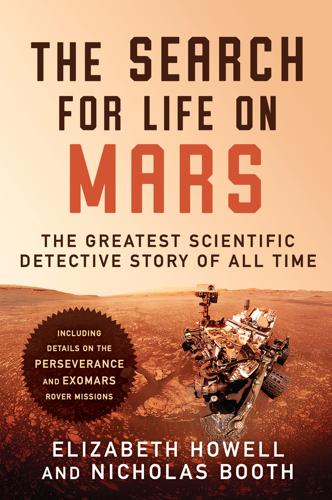
The Search for Life on Mars
by
Elizabeth Howell
Published 14 Apr 2020
* * * Those first Martian explorers were Earth-bound, trying to divine meaning from the regular passage of stars that paraded before them in the skies. Our earliest ancestors first saw Mars as a bright object in the night sky. As it was the color of blood, it soon became known as a portent of war, whose baleful presence cast an unnerving malevolence throughout the heavenly firmament. The invention of the telescope brought the Red Planet closer. When the first astronomers trained their instruments toward it in the seventeenth century, they saw ocher-colored deserts upon which darker, greener features could be made out. Some interpreted them as vegetation, supported by observations that they seemed to change with the seasons.

Physics of the Future: How Science Will Shape Human Destiny and Our Daily Lives by the Year 2100
by
Michio Kaku
Published 15 Mar 2011
Since oxygenated hemoglobin contains the energy that fuels cell activity, detecting the flow of this oxygen allows one to trace the flow of thoughts in the brain. Joshua Freedman, a psychiatrist at the University of California, Los Angeles, says: “It’s like being an astronomer in the sixteenth century after the invention of the telescope. For millennia, very smart people tried to make sense of what was going on up in the heavens, but they could only speculate about what lay beyond unaided human vision. Then, suddenly, a new technology let them see directly what was there.” In fact, fMRI scans can even detect the motion of thoughts in the living brain to a resolution of .1 millimeter, or smaller than the head of a pin, which corresponds to perhaps a few thousand neurons.
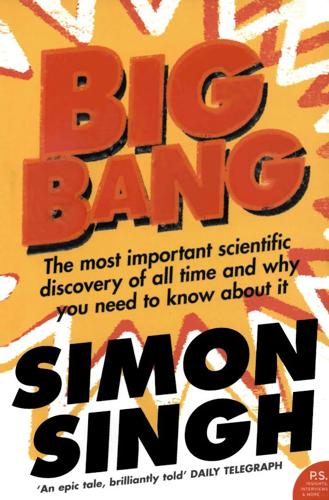
Big Bang
by
Simon Singh
Published 1 Jan 2004
The majority, however, believed that they were more mundane entities within our own Milky Way. After all, William Herschel had indicated that everything was within our pancake-shaped Milky Way. The study of nebulae dates back to the ancient astronomers, who had spotted a handful of nebulae using just their naked eyes, but then the invention of the telescope revealed a surprisingly large number of them. The first person to compile a detailed catalogue of nebulae was the French astronomer Charles Messier, who started work on this project in 1764. Previously he had already been successful in tracking down comets, which is why King Louis XV nicknamed him the Comet Ferret, but Messier was continually frustrated because, at first sight, it was easy to confuse a comet with a nebula as both types of object appear as tiny smudges in the sky.
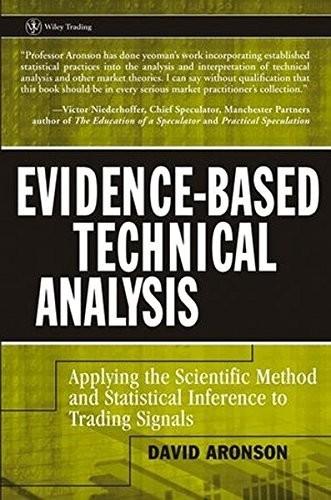
Evidence-Based Technical Analysis: Applying the Scientific Method and Statistical Inference to Trading Signals
by
David Aronson
Published 1 Nov 2006
That is to say, the rule’s rather high performance would not warrant the conclusion that it has predictive power or an expected return that is greater than zero. THE NEED FOR RIGOROUS STATISTICAL ANALYSIS The tools and methods of a discipline limit what it can discover. Improvements in them pave the way to greater knowledge. Astronomy took a great leap forward with the invention of the telescope. Though crude by today’s standards, the earliest instruments had 10 times the resolving power of the unaided eye. Technical analysis has a similar opportunity, but it must replace informal data analysis with rigorous statistical methods. Informal data analysis is simply not up to the task of extracting valid knowledge from financial markets.

The Singularity Is Near: When Humans Transcend Biology
by
Ray Kurzweil
Published 14 Jul 2005
There are many ramifications of the increasing order and complexity that have resulted from biological evolution and its continuation through technology. Consider the boundaries of observation. Early biological life could observe local events several millimeters away, using chemical gradients. When sighted animals evolved, they were able to observe events that were miles away. With the invention of the telescope, humans could see other galaxies millions of light-years away. Conversely, using microscopes, they could also see cellular-size structures. Today humans armed with contemporary technology can see to the edge of the observable universe, a distance of more than thirteen billion light-years, and down to quantum-scale subatomic particles.
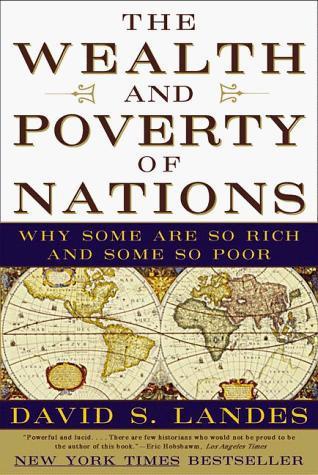
The Wealth and Poverty of Nations: Why Some Are So Rich and Some So Poor
by
David S. Landes
Published 14 Sep 1999
So was born what Karl Marx called “Modern Industry,” fruit of a marriage between machines and power; also between power (force and energy) and power (political). The Primacy of Observation: What You See Is What There Is The great Danish astronomer Tycho Brahe (1546-1601) lived and worked before the invention of the telescope, but he was a keen observer and he knew all the stars he could see in the sky. And these were all there were supposed to be. One night in November 1572, however, he saw something new in the heavens, a point of light in the constellation Cassiopeia that should not have been there. This troubled him, so he asked his servants whether they saw what he saw, and they said yes, they did.
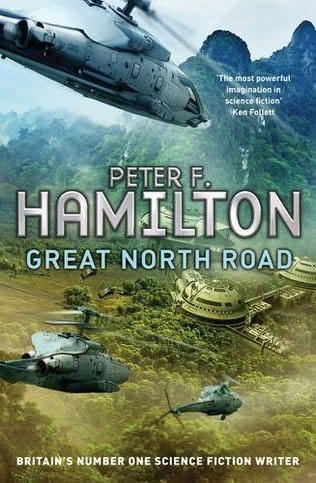
Great North Road
by
Peter F. Hamilton
Published 26 Sep 2012
There are records of old astronomers recording Sirius as having a red coloration.” “When was this?” “Sir, eh, 150 BC was the first recorded instance.” “Are you joking, Captain?” “Sir, no sir. There have been several such inconsistencies in astronomical accounts in early history. They all happened prior to the invention of the telescope, so there’s no modern verifiable proof available. But the legend persisted for some time. There was even a tribe in Africa that supposedly knew about Sirius B centuries before telescopes confirmed its existence.” “I’m glad you’re doing your homework, Captain, but exactly how is this folklore relevant?”